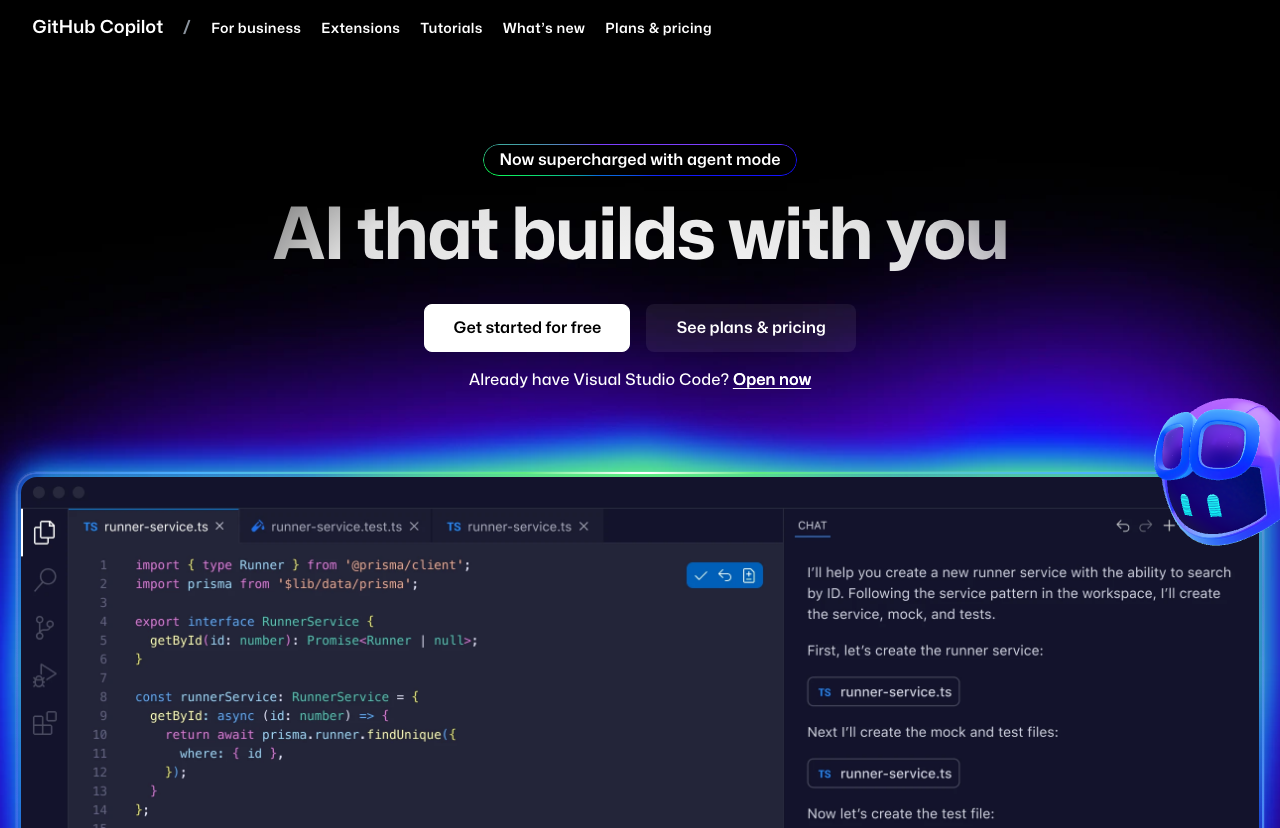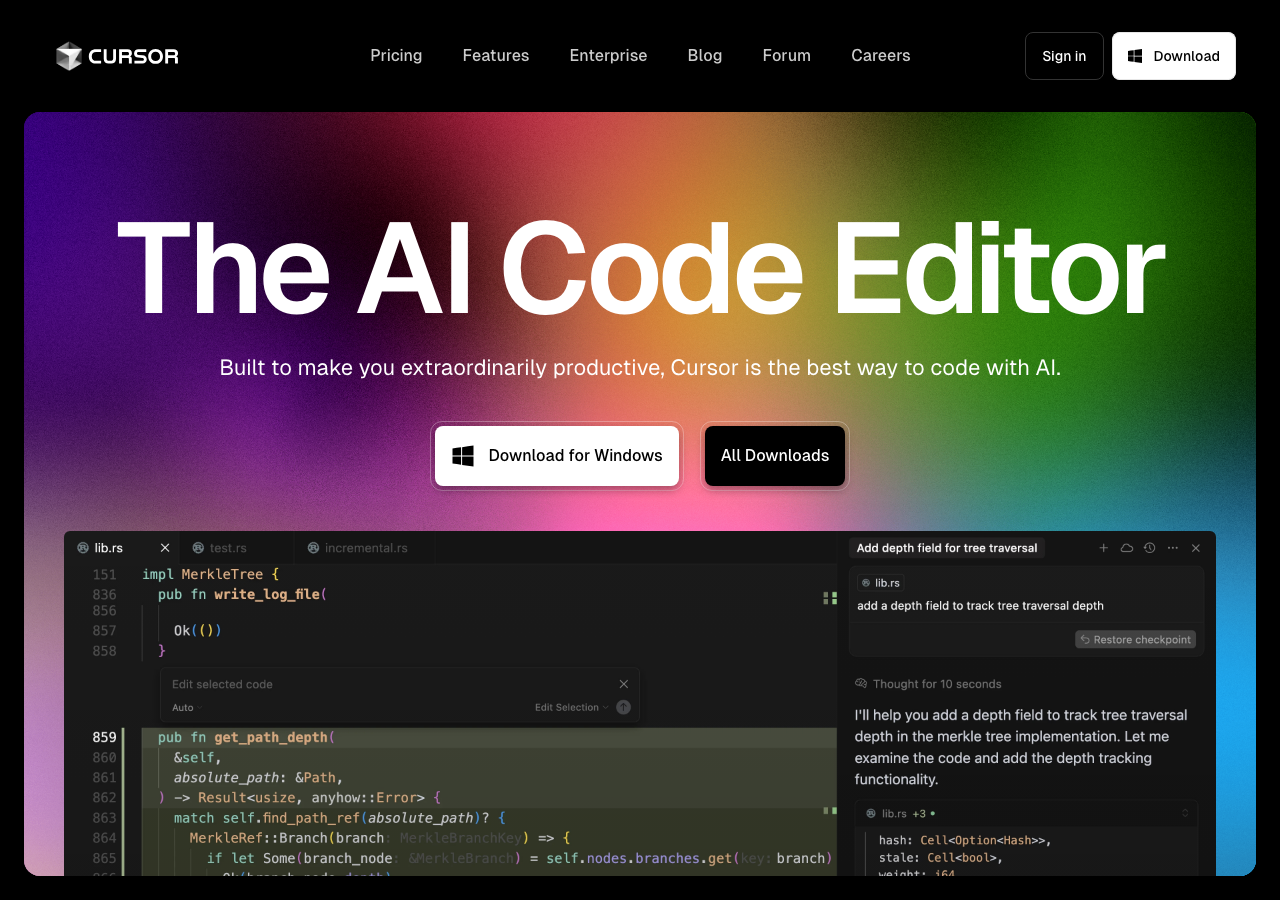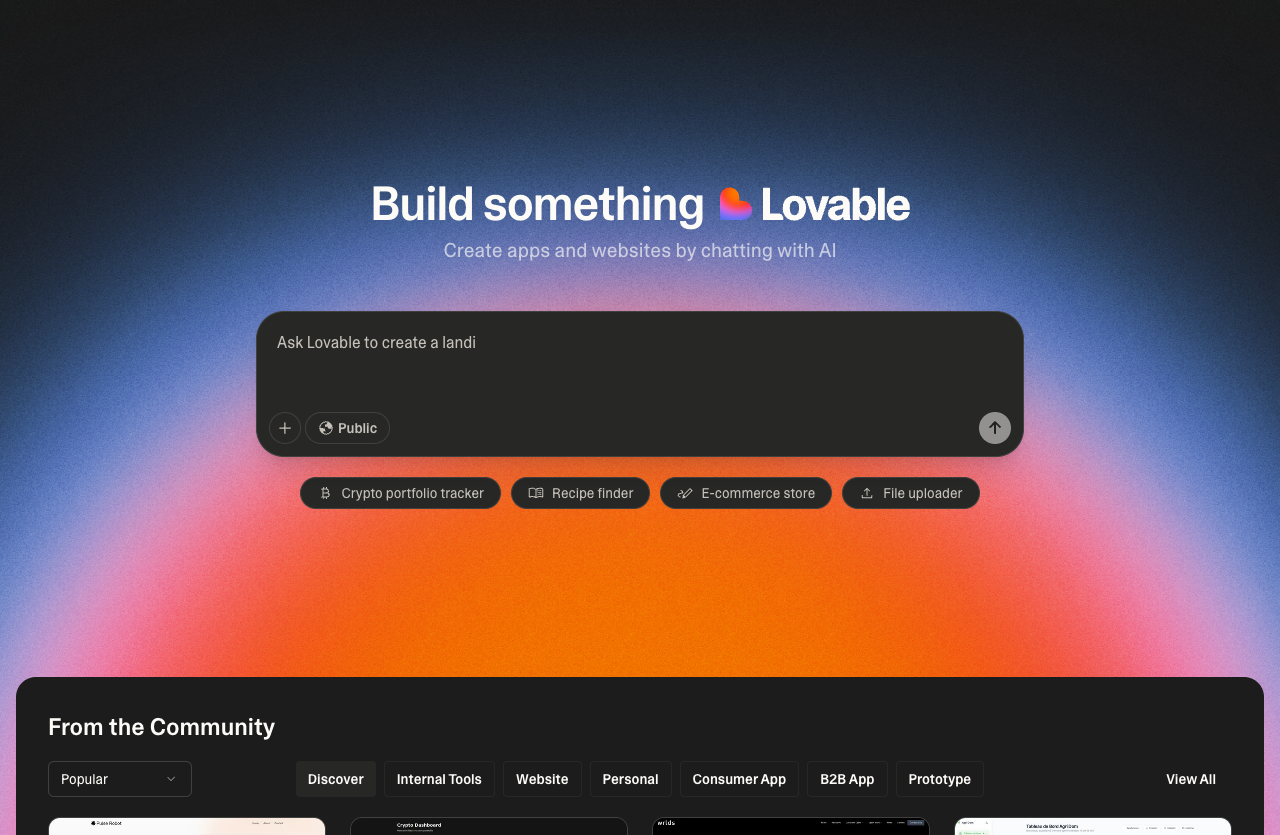A curated list of 1617 AI tools designed to meet the unique challenges and accelerate the workflows of Software Developers.
Objective 1:1 matchups of leading code assistance tools. Explore key differences to choose the right AI for your workflow.

Your AI assistant for conversation, research, and productivity—now with apps and advanced voice features.

Bring your ideas to life: create realistic videos from text, images, or video with AI-powered Sora.

Your everyday Google AI assistant for creativity, research, and productivity

Open-weight, efficient AI models for advanced reasoning and research.

AI workflow automation for technical teams

The world’s most advanced AI code editor

Your cosmic AI guide for real-time discovery and creation

Your AI pair programmer

All-in-one AI assistant for seamless teamwork, smarter workflows, and integrated productivity.

The AI code editor that knows your codebase

Build, automate, and scale AI-powered business solutions with the #1 enterprise platform.

Build powerful AI-powered apps—no code required.
Generate boilerplate services, typed clients, and unit tests while keeping architecture conventions intact. Summarize sprawling code paths before refactors, including related tickets, PRs, and incident history. Automate migration playbooks—framework upgrades, dependency bumps, or API version changes. Deploy chat-based runbooks that translate on-call alerts into actionable remediation steps.
Strong IDE support (VS Code, JetBrains, Vim) with low-latency completions and inline documentation. Enterprise-grade privacy controls: on-prem options, zero data retention, SOC 2 / ISO 27001 coverage. Integration depth with GitHub, GitLab, Jira, and CI/CD pipelines to keep suggestions context-aware. Transparent model behavior and guardrails to prevent insecure patterns or license violations.
Yes—many vendors offer free tiers or generous trials. Confirm usage limits, export rights, and upgrade triggers so you can scale without hidden costs.
Normalize plans to your usage, including seats, limits, overages, required add-ons, and support tiers. Capture implementation and training costs so your business case reflects the full investment.
Over-reliance on AI snippets that introduce subtle bugs. Adopt “trust but verify”: require generated code to pass tests and peer review, and rotate prompts into shared libraries once validated. Keeping proprietary code bases private when using hosted copilots. Favor vendors offering self-hosting or secure VPC deployments so training never touches production code. Team divergence when each developer configures different AI assistants. Standardize prompts, style guides, and model settings across squads; capture best prompts in an internal playbook.
Pilot in one squad with strong testing discipline. Track velocity, defect rate, and time-to-recovery. Once confidence grows, roll out shared prompt libraries, code templates, and governance policies. Pair senior devs with juniors to mentor AI-assisted workflows.
Story cycle time before vs. after AI adoption. Escaped defect rate and mean time to recovery. Percentage of boilerplate generated automatically. PR review throughput without compromising quality.
Combine embeddings-based code search with your knowledge base to create a custom internal Copilot that understands proprietary frameworks and guidelines.
Modern software teams rely on AI copilots, code search, and automated testing to ship faster without sacrificing reliability. These tools remove repetitive toil, surface architecture risks, and document decisions so engineers can focus on the hard problems.
Frameworks, SDKs, and cloud services change weekly. Without AI augmentation, keeping codebases current consumes the same time that should drive product value. AI pair programming, static analysis, and doc bots make continuous delivery achievable for lean teams.
Use this checklist when evaluating new platforms so every trial aligns with your workflow, governance, and budget realities:
Pilot in one squad with strong testing discipline. Track velocity, defect rate, and time-to-recovery. Once confidence grows, roll out shared prompt libraries, code templates, and governance policies. Pair senior devs with juniors to mentor AI-assisted workflows.
Combine embeddings-based code search with your knowledge base to create a custom internal Copilot that understands proprietary frameworks and guidelines.
Your AI pair programmer